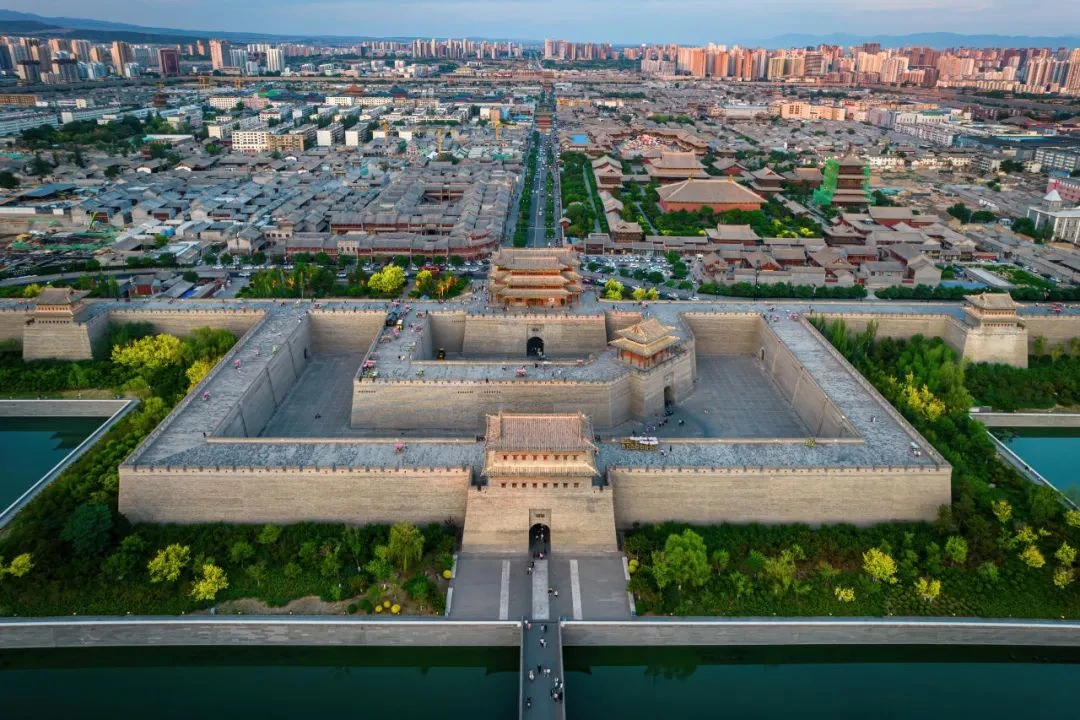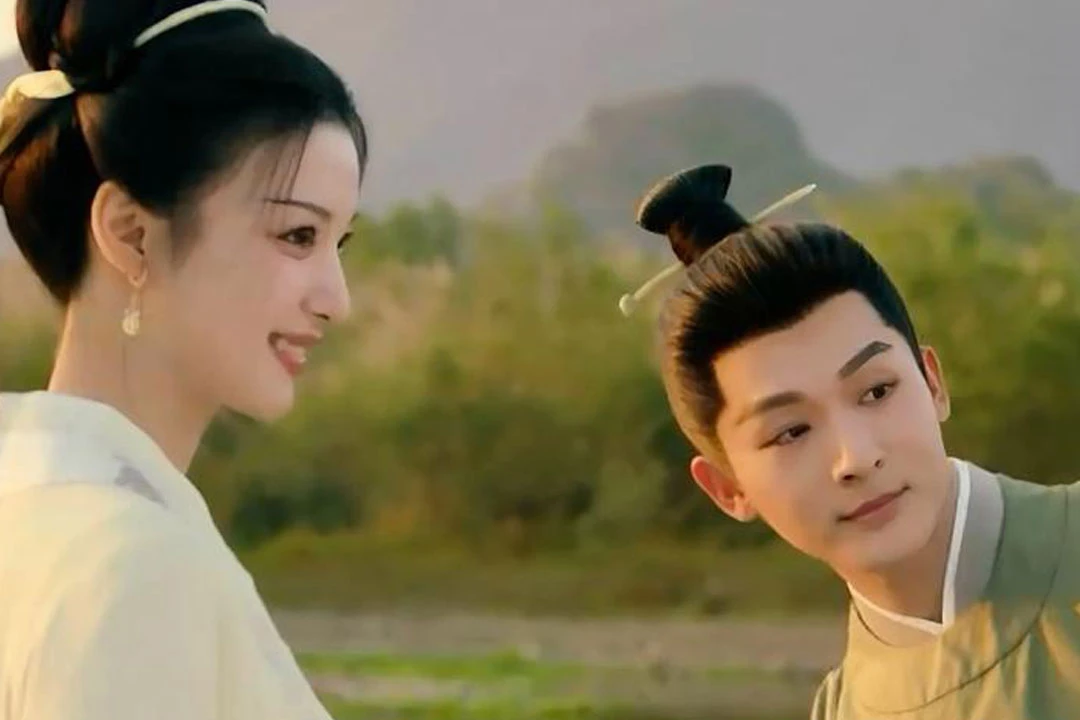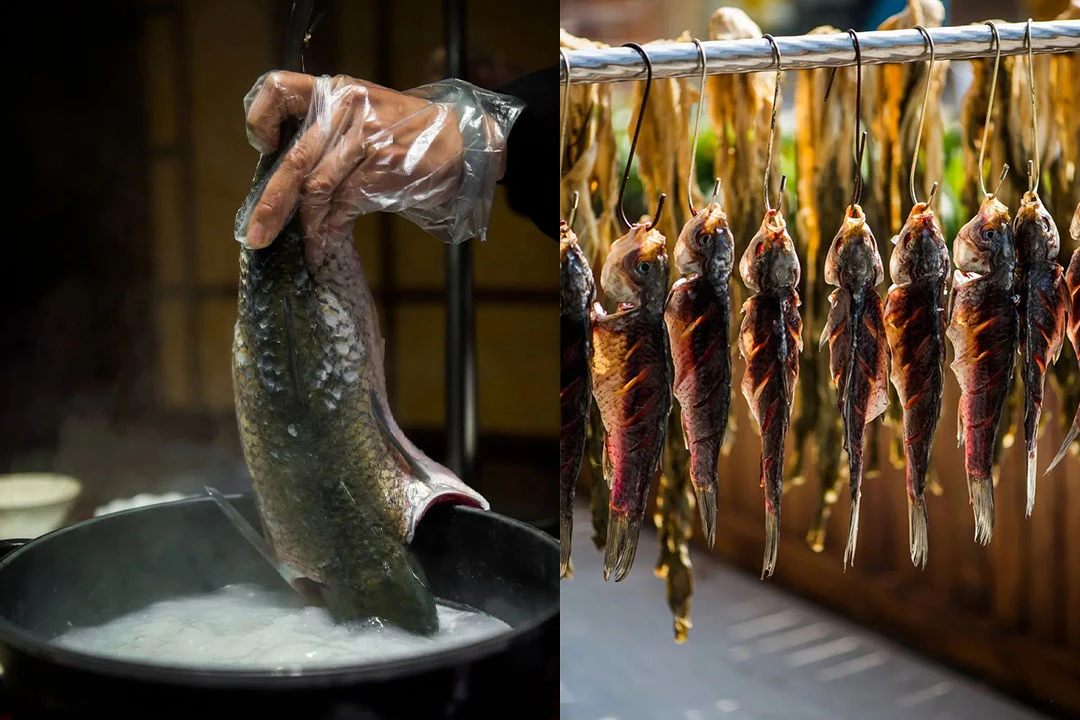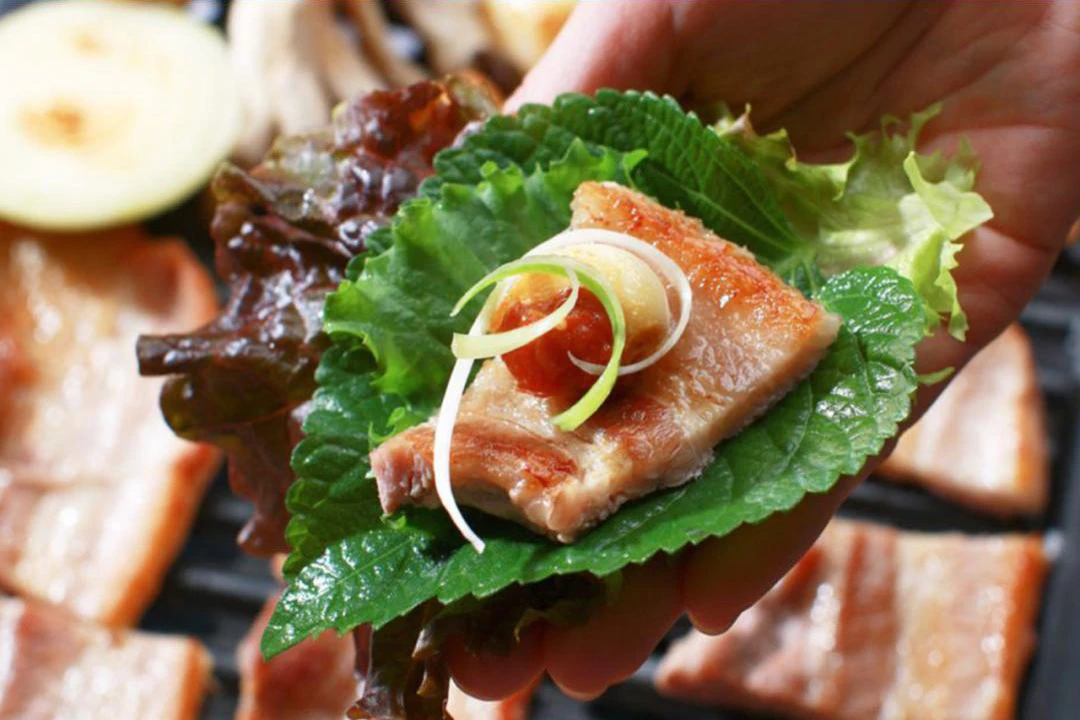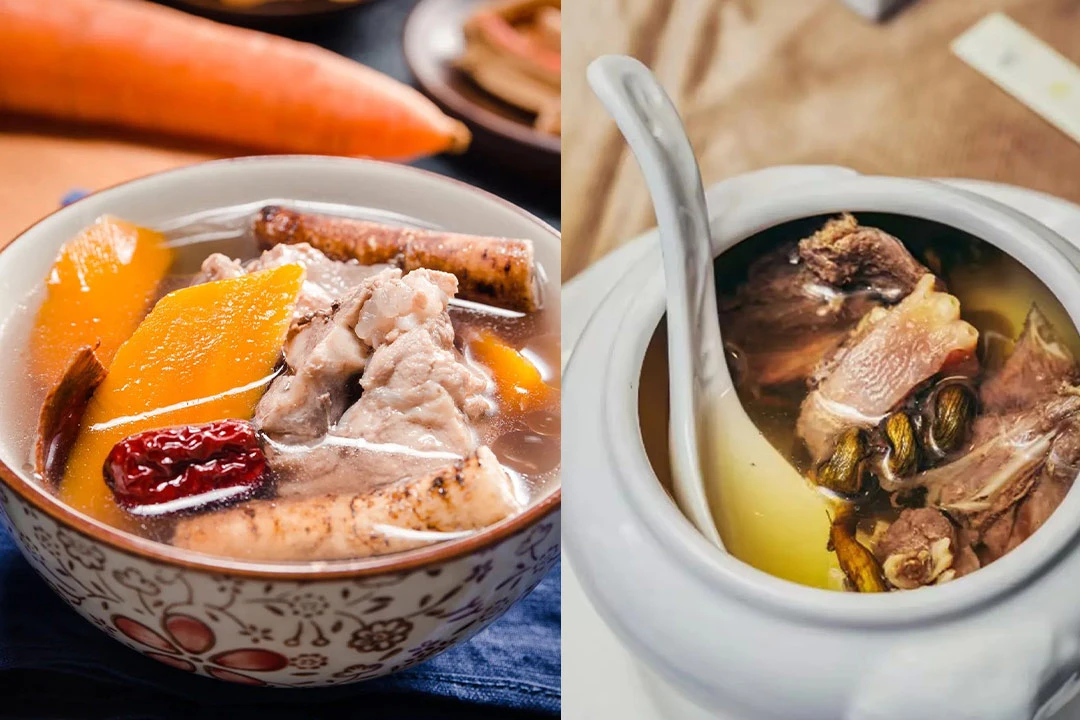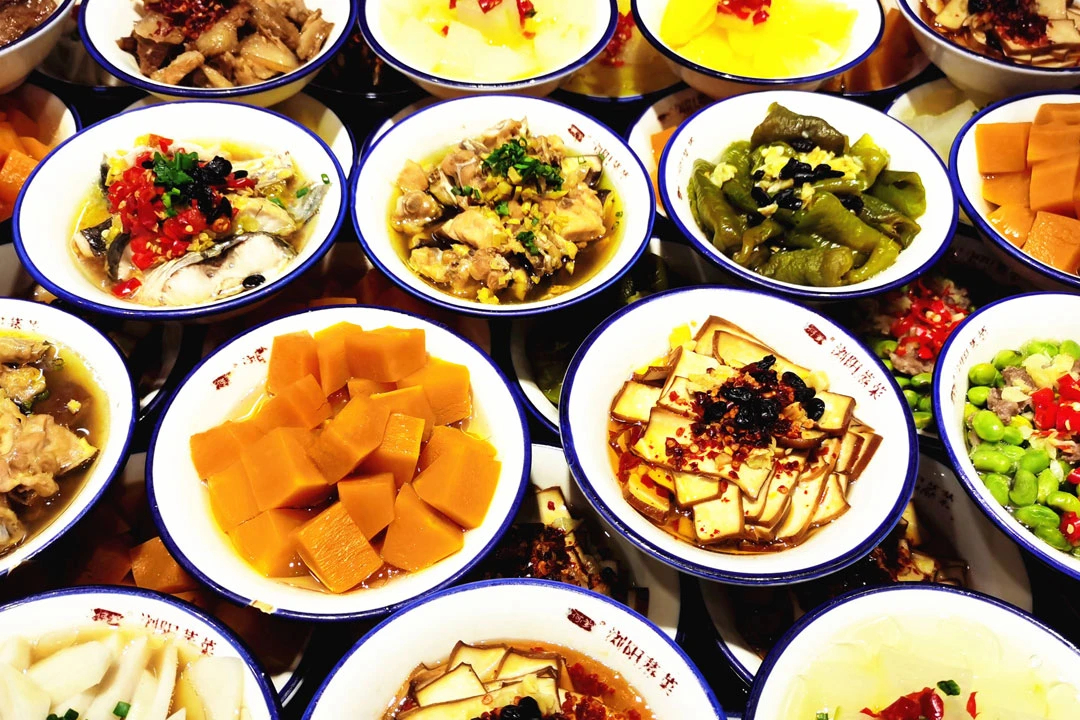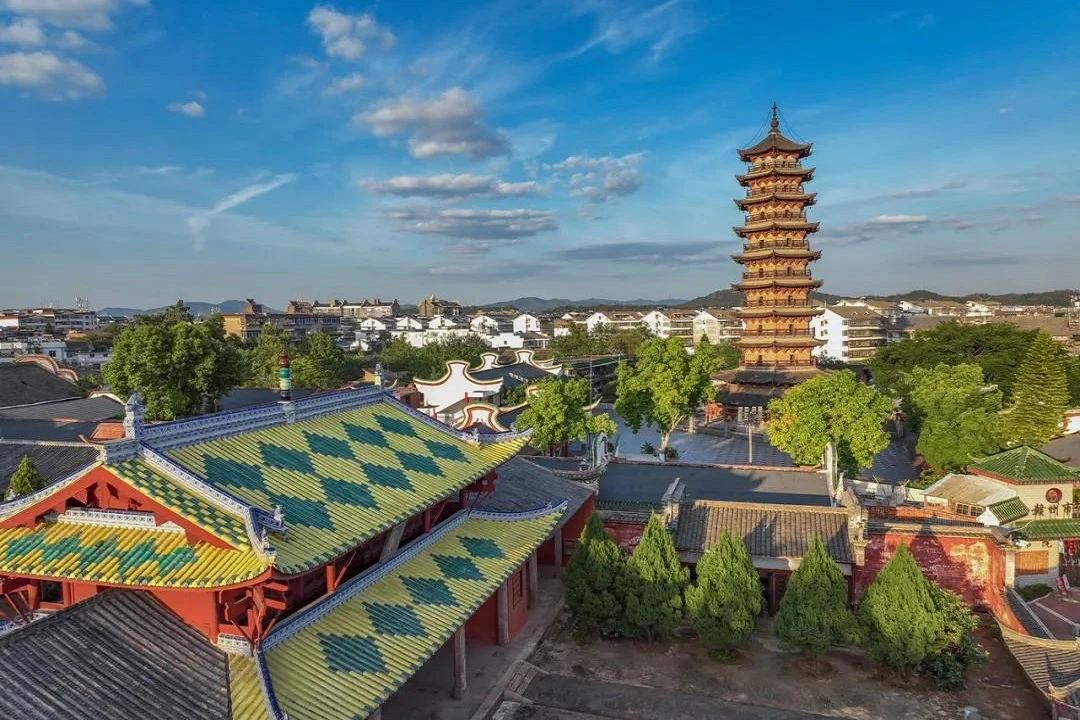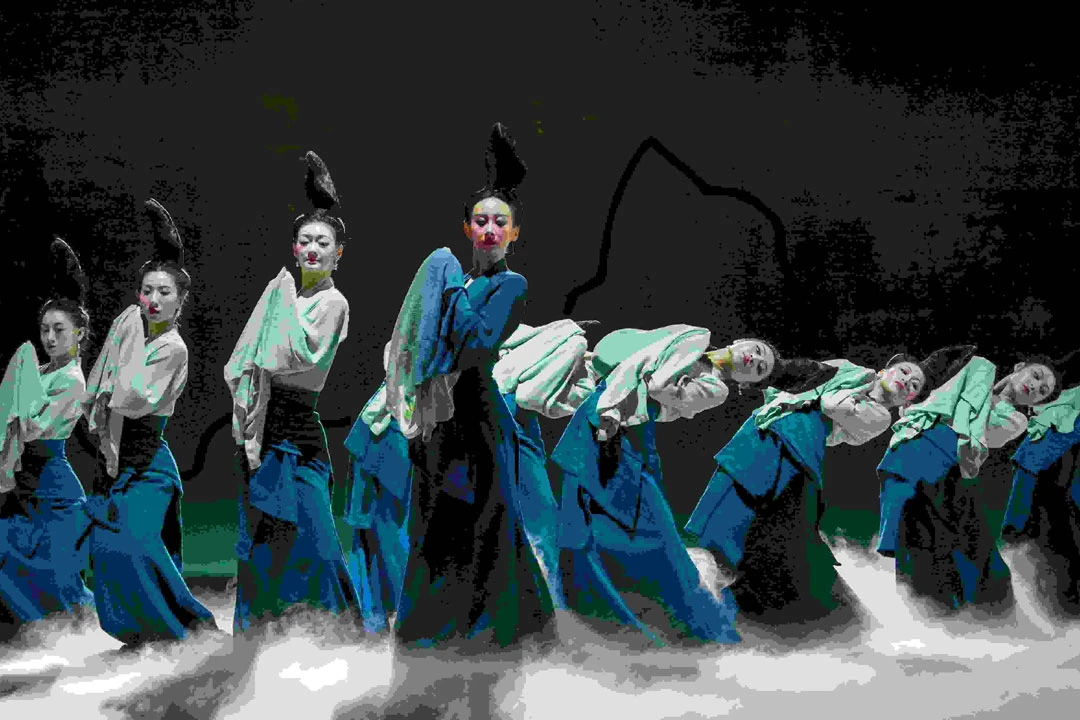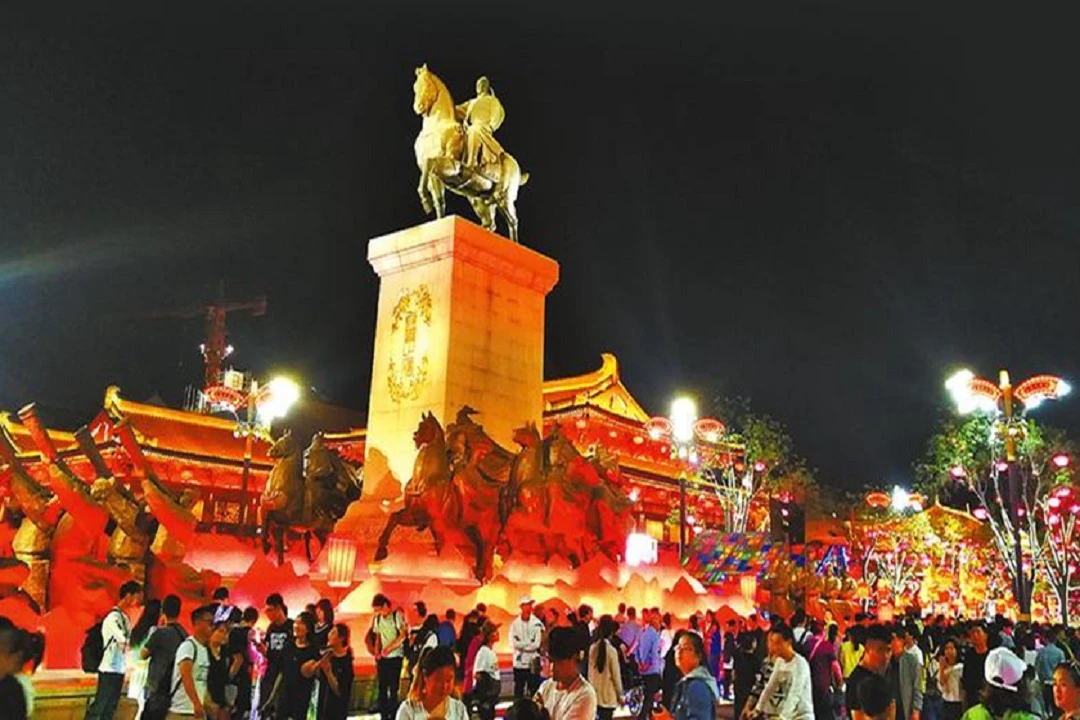Article
搜索结果:
-
Datong: A Culinary Fusion of Carbs and Meat
Nestled at the crossroads of the Loess Plateau and the Inner Mongolian Plateau, Datong is a city that defies culinary expectations. Unlike the lush, rice-growing regions of southern China or the vast, pastoral grasslands of the north, Datong offers a unique gastronomic experience where carbohydrates and meat reign supreme. The city's distinctive food culture is deeply rooted in its natural environment, history, and cultural interactions. Datong's geographical location has played a crucial role in shaping its culinary identity. Situated in a basin surrounded by mountain ranges—the Yinshan and Lüliang to the northwest and the Taihang to the southeast—the region benefits from a moderate climate that supports both agriculture and animal husbandry. This balance between farming and herding has allowed Datong to develop a rich tradition of both noodles and meat dishes, making it a paradise for food lovers seeking the perfect combination of carbs and protein. Datong is more than just a city of great food; it is a place where the culinary traditions of farming and herding meet in perfect harmony. This blend of agricultural and pastoral influences is not only evident in the city's cuisine but also in its cultural heritage. Datong's historical significance as a former capital… -
"The Tale of Liuzhou" Sets a New Standard
Beauty and Brains: How "The Tale of Liuzhou" Redefines Power Couples in Period Dramas In recent years, Chinese period dramas have often found themselves at a crossroads, struggling to balance audience expectations with meaningful storytelling. Many productions have either leaned heavily on the "damsel in distress" trope or swung to the opposite extreme with revenge-driven, reborn heroines. However, "The Tale of Liuzhou" (柳舟记) has emerged as a breath of fresh air in this landscape, offering viewers the rare treat of a truly balanced power couple in a historical setting. At the heart of "The Tale of Liuzhou" lies the dynamic between Zhang Wanyi's (张晚意) cunning prince, Cui Xingzhou, and Wang Churan's (王楚然) multifaceted heroine, Liu Mentang (柳眠棠). This pairing represents a significant departure from the typical romantic leads seen in costume dramas. Cui Xingzhou is not merely a dashing hero but a complex character with his own ambitions and schemes. His storyline, which involves both military campaigns and court intrigue, provides ample opportunity for Zhang Wanyi to showcase his acting prowess. Zhang Wanyi brings a commanding presence to the role, effortlessly conveying the prince's noble bearing and strategic mind. Even in moments of danger, his portrayal exudes a sense of control and aristocratic charm that captivates the… -
The Donkey's Gambit: A Comedy of Errors in Republican China
In the rich tapestry of Chinese cinema, certain films emerge that captivate audiences with their unique blend of humor, social commentary, and historical context. One such gem, adapted from a successful stage play, has taken viewers on a hilarious journey to a remote school in Republican-era China, earning an impressive 8.3 rating on Douban. This comedy-drama, helmed by the talented duo of Zhou Shen (周申) and Liu Lu (刘露), weaves a tale of deception, human nature, and societal critique that resonates far beyond its historical setting. Laughter and Lies: When a Donkey Becomes a Teacher At the heart of this uproarious film is a premise so absurd it borders on the surreal: a group of teachers at a remote school, desperate to claim their salaries, decide to list a donkey as a faculty member. This outlandish scheme sets in motion a series of events that spiral into increasingly comedic and complex situations. Mr. Donkey's (驴得水) success lies in its ability to take this farcical premise and ground it in relatable human motivations and conflicts. Each character, brought to life by a talented ensemble cast including Ren Suxi, Da Li, and Liu Shuailiang, is vividly drawn and distinctly memorable. Their individual quirks, desires, and flaws drive… -
Echoes of Change: A Family's Struggle in 1990s Wuhan
In the rich tapestry of Chinese cinema, certain films stand out for their ability to capture the essence of an era through the lens of everyday lives. One such powerful work takes us to the heart of Wuhan in the 1990s, offering a poignant exploration of family, societal change, and the indomitable spirit of ordinary people caught in the currents of a rapidly transforming China. From Factory to Street: The Collision of Dreams and Reality Set against the backdrop of Wuhan, a city at the crossroads of tradition and modernity, the film introduces us to a family that embodies the hopes and struggles of millions during China's economic reforms. At its center are Ma Xuewu, a mid-level manager in a state-owned enterprise, and Li Baoli (李宝莉), a street vendor in the bustling Hanzheng Street market. Their lives, along with that of their young son, serve as a microcosm of the broader changes sweeping through urban China in the 1990s. The story begins with a moment of triumph - the family's move to a new home, a tangible symbol of their aspirations and the promise of a better life. However, this initial joy quickly gives way to a series of challenges that… -
Bridging Cultures: A Modern Romance with Tradition
In the heart of China's breathtaking Zhangjiajie (张家界)0 Grand Canyon, an extraordinary fusion of ancient tradition and modern tourism is unfolding. As the Qixi Festival, often referred to as Chinese Valentine's Day, approaches, the iconic glass bridge spanning the canyon has transformed into a vibrant stage for cultural celebration and international exchange. Glass Bridge Becomes Stage for Ancient Love Story On August 10th, visitors to the Zhangjiajie Grand Canyon were treated to an unexpected spectacle. The usually transparent glass bridge, known for offering heart-stopping views of the canyon below, was adorned with traditional Chinese architectural elements. Red walls, green-tiled roofs, and a delicate "magpie bridge" spanning its length created a surreal blend of modern engineering and ancient aesthetics. As music filled the air, dancers dressed as the legendary characters Niulang (牛郎) and Zhinü (织女) (the Cowherd and Weaver Girl) took center stage. Their performance, a mesmerizing blend of traditional and contemporary dance, brought to life the poignant tale of star-crossed lovers reunited for a single day each year. George, an American tourist who had come to experience the glass bridge's famous views, found himself captivated by the performance. "The dancers' movements were so graceful," he remarked. "In their expressions, I could almost see the joy and… -
Guangdong Food: the Art of Eating Fish
Guangdong, a province in southern China, is renowned for its rich and diverse culinary traditions. Among its many gastronomic delights, fish occupies a special place on the Guangdong table. The region’s love for fish has resulted in an astonishing variety of dishes, each showcasing the unique flavors and textures of both freshwater and saltwater fish. Here, eating fish isn’t just about nourishment; it’s an art form that reflects the cultural richness and culinary sophistication of the province. Lingnan: The Freshwater Fish Mastery of the Pearl River Delta The Pearl River Delta, formed by the West and North Rivers, is a fertile area with abundant water resources. This has allowed the region to cultivate a long-standing tradition of freshwater fish farming, dating back to the Tang Dynasty. In this land of rivers and lakes, the people of Lingnan have perfected the art of eating freshwater fish. In Shunde, a district of Foshan in the Pearl River Delta, fish is more than just food—it's a cultural symbol. Known as the birthplace of Cantonese cuisine, Shunde is famous for its fish dishes, with "fish, rice, milk, poultry, and flowers" being the five representative ingredients of the local diet. Among these, fish holds the… -
The Perfect Olympic Snack Companion
With the European Championship just over and the Olympics on the horizon, summer nights are made for watching sports. But just beer can be too monotonous. Enter the flavorful duo of boiled edamame and boiled peanuts. These two snacks, often seasoned together as "flower and bean harmony," not only make great companions on the table but also shine individually in various dishes and snacks. Edamame: More Than Just a Simple Snack Edamame, or young soybeans, are visually appealing with their vibrant green color and a texture that is both crunchy and tender. The simplest way to prepare edamame is by boiling them in water with some salt and spices like star anise and Sichuan peppercorns. After boiling, let them cool naturally, and they're ready to eat. Historically, in old Beijing taverns, entire edamame plants were boiled, and diners would pick the pods themselves. To make the flavors more pronounced, you can trim the ends of the pods before boiling, though it's not a must. Most people eat edamame by sucking the beans out of the pods, so the saltiness on the pod's surface enhances the flavor. For a more complex taste, try cold tossed edamame, a summer favorite in Wuhan.… -
Yichun: A Forested Retreat in Northeast China
Nestled in the northeastern corner of China, Yichun, a small city in Heilongjiang Province, offers a perfect escape from the sweltering summer heat. Unlike the more famous winter destination of Harbin, Yichun's charm lies in its cool, forested summer. With an average temperature of 22°C, even during the hottest months, Yichun provides a refreshing retreat far from the heat waves sweeping across most of the country. As I landed at Taiping International Airport, I immediately felt the cool, crisp air that Yichun is famous for. The journey from Harbin to Yichun was a scenic drive through the seemingly endless forests along the Udale Highway, with the Uma River meandering beside the road. Yichun's vast expanse of forest is its calling card, and the 20°C forest is the soul of its summer. Entering the Wuying National Forest Park, the cool, moist air filled my lungs as the LED sign at the entrance proudly displayed the high concentration of negative oxygen ions, over 7,500 per cubic centimeter. The park's lush greenery and serene ambiance make it a perfect spot to escape the oppressive heat. On a rainy day, the temperature can drop even further, creating an almost autumnal feel. Walking along the… -
When Champions Meet: The Fusion of Sports and Chinese Opera
In a groundbreaking media project, the worlds of Olympic sports and traditional Chinese opera have collided in an unprecedented way. The show, titled Different Strokes, Same Mastery (异曲同“功”), has been captivating audiences since its debut, offering a unique blend of athleticism and artistry. This innovative series, produced by China Media Group’s Arts Program Center, features five Olympic and World Champions who team up with fifteen Chinese opera performers to explore the parallels between six major sports and the skills of traditional opera. Through this cross-disciplinary exchange, the program not only showcases the beauty of both disciplines but also highlights the dedication and perseverance required to excel in these demanding fields. A Meeting of Equals: Sports and Opera Collide The show is divided into six episodes, each lasting 15 minutes, where champions from sports like fencing, diving, and rhythmic gymnastics are paired with opera artists skilled in techniques like "Small Quick Spear," "Cloud Somersault," and "Chair Skills." Among the participants are Olympic fencing champion Zhong Man, diving gold medalist He Chong, archery champion Zhang Juanjuan, gymnastics world champion Zhang Nan, and rhythmic gymnastics world champion Sui Jianshuang. These athletes are joined by talented young opera performers such as Tang Kai, Zhang Huan,… -
Five Captivating Chinese Short Dramas Worth Watching
1. “I’m the Stepmother from the 80s”(我是80年代的后娘) Genre: Travel, Family, Inspiration Synopsis: College student Si Nian unexpectedly time-travels back to the 1980s and becomes a “fake daughter.” She is kicked out of a wealthy family and marries divorced single father Zhou Yue Shen. Armed with modern wisdom and resilience, she gradually wins the trust and affection of the children, creating a legendary tale. This drama’s unique time-travel theme and heartfelt storytelling quickly made it a hot topic on social media. Starring: Teng Zewen, Su Lianhe Review: The plot flows smoothly, balancing tension with heartwarming family dynamics. Viewers can feel both the suspenseful moments and the genuine emotions between characters. 2. “Little Pencil” Genre: Fantasy, Adventure, Inspirational Synopsis: Su Yunqi, daughter of a prime minister, discovers she is the antagonist in a novel. Determined to change her tragic fate, she rebels against destiny, striving for a new life. The drama portrays female empowerment and the courage to fight against adversity. Cast: Ye Shengjia, Li Muchen Review: With a fresh plot, brisk pacing, and skilled performances, especially by Li Muchen as the complex protagonist, “Little Pencil” captivates viewers. 3. “Love Without Regrets”(若无遗憾,便难以再爱) Genre: Urban, Romance, Thriller Synopsis: Gu Qingqing suffers a mental breakdown after a car accident and becomes Shen Manqing. She… -
The Aroma of Perilla: A Summer Sensation Across Asia
Perilla (紫苏), a herbaceous annual plant of the mint family, is easily recognizable by its vibrant green or purple leaves, serrated edges, and most notably, its intense fragrance. Its popularity spans across various provinces in China, each region giving it a unique name: "Renzi (荏子)" in Gansu and Hebei, "Chisu (赤苏)" in Shanxi and Fujian, "Jisu (鸡苏)" in Hunan, and "Shuishengma (水生麻)" in Hubei, to name a few. The herb's many regional names, with nearly 40 variants recorded in historical texts, reflect its widespread use and the cultural significance it holds across different areas. The earliest records of perilla's varieties date back to the Qin and Han dynasties in ancient Chinese medicinal texts. Green-leaved perilla, referred to as "Ren (荏)," and purple-leaved perilla, known simply as "Su (苏)," were distinguished for their different flavors. Historical accounts suggest that purple-leaved perilla, with its stronger aroma, was preferred in both culinary and medicinal uses. Modern botanical studies, however, debate whether to classify green and purple perilla as distinct species or as variations of the same species. The mainstream view in China is that they are variations due to cultivation, with purple-leaved perilla being slightly more aromatic than its green counterpart. The flavor… -
Guangdong's Culinary Mastery in Combating Dampness
The Unseen Enemy: Summer Dampness This summer, the weather in China has been characterized by one word: humid. With extreme temperatures and heavy rains taking turns, the entire country feels like it's trapped in a giant steamer. Even the northeastern regions, traditionally cool summer retreats, have not escaped the invasion of humidity. The unprecedented muggy weather has drawn national attention to a place known for its expertise in fighting dampness—Guangdong. There's a joke that circulates widely: when you tell a friend you're feeling down, most people will suggest that you take a break and relax. But if you tell a friend from Guangdong, they're more likely to say you have too much moisture in your body and might even prepare a medicinal soup to help you out. Indeed, the long, hot summers and the humid, rainy climate of Guangdong have fostered a unique understanding of the concepts of "dampness" and "heat." Feeling low is blamed on dampness, a sore throat on heat, and indigestion on a mix of both. For Guangdong locals, any physical or mental discomfort can usually be traced back to dampness, heat, or a combination of the two. Luckily, Guangdong's culinary culture is rich with delicious "weapons"… -
Museums: The New Cultural Culinary Hubs
From Artifacts to Appetizers: How Museums are Reinventing the Visitor Experience In the heart of Changsha, capital of China's Hunan province, an unexpected culinary revolution is taking place. The Hunan Museum, long revered for its vast collection of historical artifacts, has embarked on a bold new venture: transforming its visitor experience through food. This innovative approach is redefining the role of museums in modern society, blending cultural education with gastronomic exploration. The museum's newly opened dining area is more than just a convenient spot for hungry visitors to grab a bite. It's a carefully curated space where history comes alive on the plate. Five distinct culinary brands have taken up residence, each offering a unique perspective on Hunan's rich cultural heritage. From ancient steamed dishes to contemporary coffee creations, every menu item tells a story. At the heart of this culinary experiment is the concept of "edible history." The museum has collaborated with local chefs and food historians to recreate dishes inspired by artifacts found in the famous Mawangdui Han Tombs. Diners can savor meals that echo those enjoyed by nobility over 2,000 years ago, served on plates adorned with Han dynasty motifs. This immersive dining experience allows visitors to… -
The Charm of Ganzhou: A Hidden Gem in Southern Jiangxi
A Journey Through Time and Flavor Ganzhou, nestled in southern Jiangxi, may not be a name that immediately rings a bell, but mention the succulent Gannan navel oranges, and you'll see faces light up with recognition. However, Ganzhou offers much more than its famed citrus fruits. This historic city, once known as Qianzhou, boasts a rich tapestry of history and culture, dating back to the Song Dynasty. To truly appreciate the charm of Ganzhou, start your day with a hearty breakfast. A steaming bowl of Ruijin beef soup is the perfect wake-up call. This dish features fresh yellow beef and sweet potato noodles. The beef, cut into strips or diced, is marinated with a touch of water and sweet potato flour before being cooked to perfection. The soup, rich and flavorful, can be customized with scallions, celery, ginger, chili, and soy sauce. Once your stomach is full, you're ready to explore the city. Historical Treasures and Cultural Landmarks Begin your exploration at the Ganzhou Confucian Temple, located in the old city of Zhanggong District. This temple, dedicated to education and the worship of Confucius, is the largest and best-preserved of its kind in Jiangxi. Built in the Qing Dynasty, the… -
Canvas of Time: When Ancient Art Breathes Anew
From Stage to Screen: The Metamorphosis of a Cultural Phenomenon In the realm where traditional artistry meets cutting-edge cinematography, a new cinematic experience is poised to captivate audiences this National Day holiday. "Only This Verdant Hue," (只此青绿) a film adaptation of the critically acclaimed dance-drama of the same name, promises to transport viewers across a millennium into the heart of one of China's most treasured artistic masterpieces. The movie, inspired by the Song Dynasty landscape painting "A Thousand Li of Rivers and Mountains," (千里江山图) aims to breathe life into the static brushstrokes of this ancient artwork. This painting, a jewel in the crown of the Palace Museum's collection, has been viewed by the public only four times in the past century, shrouding it in an aura of mystery and reverence. As the film's tagline suggests - "Nameless and unsigned, just this one scroll, green for a thousand years, mountains and rivers without end" - the project is an ambitious attempt to unravel the story behind the creation of this monumental work. The narrative follows a young court painter, Xi Meng, as he embarks on the herculean task of capturing the essence of China's vast landscapes on a single scroll. The… -
Crossroads of Destiny: New Dramas to Watch This August
"A Lonely Hero's Journey"(《幸福草》) A Tale of Hope, Sacrifice, and Cultural Exchange In the heart of Suzhou, where ancient traditions blend seamlessly with modern aspirations, a hero emerges. Gu Yi Zhong, an architecture graduate, returns home with a mission that transcends mere blueprints and structures. His purpose? To sow seeds of hope across borders, allowing happiness to take root. As part of the Chinese Cordyceps cultivation team, Gu Yi Zhong faces cultural clashes, language barriers, and unexpected humor. The team's goal: to plant Cordyceps in foreign lands, bridging gaps and enriching lives. Against diverse landscapes and climates, they build mushroom sheds, cultivate dry rice, and empower local communities. In the picturesque city of Suzhou, Gu Yi Zhong's return sparks a tale of cultural exchange. Beyond architectural blueprints, he plants seeds of hope—literally and metaphorically. The Cordyceps cultivation team faces not only soil and climate challenges but also the complexities of human connection. As they build mushroom sheds and cultivate dry rice, they also nurture bonds that transcend borders. "A Lonely Hero's Journey"—a symbol of resilience and determination—becomes more than a plant; it embodies the spirit of unity. Tune in to CCTV-1 on August 8 at 8:00 PM for a double… -
Dali: The Ultimate Escape for China's Youth
Dali, known as the beginning and end of many a poetic journey, is a city that embodies charm and allure. It is a place where the natural beauty of the landscape meets the dreams and ideals of countless young people. This city, nestled between mountains and water, serves as the spiritual retreat for many weary workers across China. So what is it about Dali that makes it stand out in a nation full of spectacular landscapes and vibrant cities? Why does it consistently attract so many visitors and so few complaints? A Natural Haven Dali's appeal can be traced back to its geographic and historical significance. In ancient times, Dali was both a city and a kingdom. The Kingdom of Dali, known for its devout Buddhist rulers, spanned parts of present-day Yunnan, Guizhou, Sichuan, and even parts of Myanmar, Laos, Vietnam, and India. Modern Dali is a prefecture-level city in Yunnan Province, consisting of several counties and a county-level city. However, most people associate Dali with the ancient city built during the Ming Dynasty on the western shores of Erhai Lake. Even without human influence, Dali would still be a remarkable place due to its unique geography. The city is… -
A Sweet Haven Amidst Guangxi's Landscapes
"Life is bitter, so add some sweetness." Many know that sugar is a primary energy source and brings joy and anticipation, but few realize that Guangxi produces over 60% of China's sugar. In the southwestern part of Guangxi lies China's sweetest city, where every two residents, one is involved in sugarcane cultivation. This is Chongzuo, also known as "China's Sugar City." Chongzuo boasts the largest sugarcane planting and sugar production base in China, with an astounding 400,000 hectares dedicated to sugarcane. As visitors come to witness this sea of sugarcane, they are often surprised by the breathtaking beauty of Chongzuo's landscapes. Beyond its reputation as a sugar hub, Chongzuo is an underrated scenic treasure. Under the karst topography typical of Guangxi, Chongzuo's picturesque scenery rivals that of Guilin. This sentiment was once confirmed by the famed traveler Xu Xiake, and today, Chongzuo's unspoiled beauty remains a hidden gem. The city is home to the world's largest rock painting site at Huashan, Asia's top transnational waterfall at Detian, and many other natural and historical wonders. The Epicenter of China's Sugar Industry From Nanning, traveling west along the provincial highway, one can see vast sugarcane fields stretching out between karst peaks. As… -
The Night Charms of Xi'an City
Xi'an, famed for its ancient glory, is now crafting a vibrant nocturnal tapestry that blends tradition with modernity, enticing visitors with its diverse nocturnal offerings. As twilight descends, the city transforms into a mesmerizing spectacle. Youngsters adorned in Hanfu stroll through ancient streets, each step narrating tales steeped in a millennium of history. Museums, like living chapters of textbooks, beckon as popular landmarks for cultural pilgrimages after dark. Cultural Renaissance Under the Stars Beneath the city walls and along the moats, lively scenes unfold: live performances of pop songs, diverse restaurants, bars, theaters, and commercial districts paint a vivid picture against the backdrop of the city's dazzling nocturnal skyline. These venues weave a leisurely summer ambiance, inviting locals and tourists alike to unwind. Summer has ushered in a resurgence of "Night Walks," evoking scenes from Tang Dynasty poetry where evenings were lit by flickering candles. During the 5th Night Tourism Carnival, Xi'an unveils a plethora of themed nocturnal activities that juxtapose ancient charm with contemporary vibrancy, showcasing the allure and vitality of the ancient capital after dark. Xi'an's commitment to preserving its cultural heritage extends into the night, where ancient landmarks such as the City Wall and the Bell Tower… -
Yancheng: The Unique Charm of China's Flat Jewel
Nestled on the eastern coast of China, Yancheng (City of Salt) is renowned for being the country's only city without mountains. Despite its flat terrain, this coastal gem boasts a wealth of natural and cultural treasures that captivate visitors. Yancheng's harmonious blend of ancient traditions and vibrant modernity creates a multifaceted charm that can be both savory and sweet. A Symphony of Nature and Heritage Yancheng is home to Jiangsu's sole UNESCO World Natural Heritage site, the Yellow (Bohai) Sea Migratory Bird Habitat. Stretching over hundreds of kilometers, this expansive coastal wetland shelters two national nature reserves dedicated to the preservation of red-crowned cranes and milu deer. Here, the dance of migratory birds paints a mesmerizing tableau that changes with the seasons. After exploring these wild landscapes, visitors can retreat to Yancheng's historic streets and alleys, where old bricks and tiles whisper stories of a bygone era. The city's rich history, rooted in its ancient salt trade, is preserved in its architecture and cultural practices, inviting travelers to uncover its many layers. Salty Tales of Kongyuan Park From the moment I arrived in Yancheng, the city's historical and cultural essence with a "salty" twist was evident. My stay at Kongyuan…
